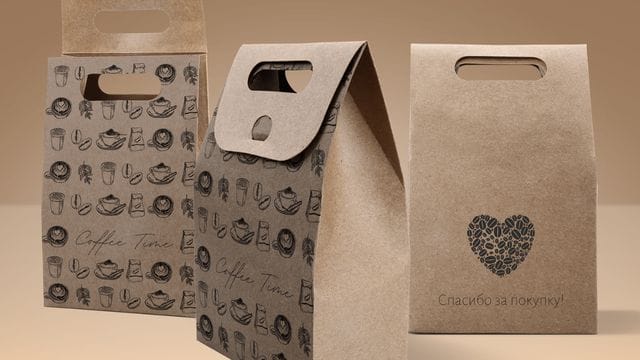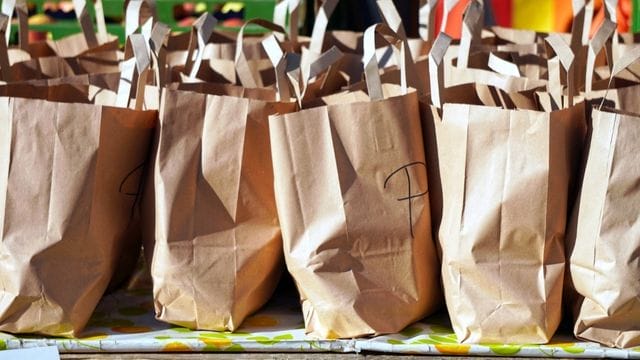Currently, the retail industry is expanding rapidly over the globe, and the need for bagged packaged goods is also on the rise.
The secret behind the rapid growth of retail businesses is their concern for their customers’ satisfaction, feedback, and overall experience. To them, nothing is more important than a customer, and for this reason, as they continue to develop their products step by step, the packaging is also one of the most important things that they must address.
In this approach, fulfilling a customer’s order and packaging are of equal importance. Depending on the item, there are a variety of bagged packed goods: can packaging, box packaging, plate packaging, paperboard boxes, paper bags, polythene bags, fabric bags, etc.
Sorts of Bagged Packaged Goods
Various packaged food companies require distinct packaging materials. Among the several often employed materials are:
- Aseptic handling
- Bags
- Boxes
- Jars
- Containers
- Adaptable bundling
- Beds
- Plate
- Coverings
What is the Distinction Between a Bag and a Package?
Bagged Packaged Goods are in high demand today and are also secure and agreeable. Customers’ positive audits and trust are the driving force behind the rapid development of the retail industry.
Yet, despite the fact that we all commonly use the term ‘Bags and Packages,’ we may have never sought to define it accurately. If I were to ask you, what would be your response?
Perhaps the majority of you will reply that they are the same, as we use both to transport our goods, and many of you will add that we use these to protect our goods. Definitely! All things considered, both answers are correct. However, there are differences between bags and packages –
- Similar to open compartments where products are secured, bags resemble open compartments.
- Bags are delicate compared to packages, which are robust.
- Bags have chains where packages are fastened using heat fixing, ultrasonic fixing, jaw plan, etc.
- Bags are less secure than packages.
- A bag is required to transport packages from one location to another.
- Despite the modesty of the two bags and packages, packages are more modest than bags. Therefore, packages are more economical than bags.
- Packages are less durable than bags. We may include long-haul bags for any type of product.
Individuals can also use cardboard packaging for development. By cutting and making paper packets or cardboard packages, they can create photo outlines, butterflies, dream catchers, and so on to adorn their adorable home. Similarly, bags can be laundered although packages cannot.

Advantages of Bagged Packaged Products
- The advantages of bagged packaged items include their ease of use and dependable packaging structure.
- As the bagged wrapped items are little, they are also covered by item insurance.
- A further advantage of these packaging systems is that clients can utilize them for storing important items, creating plants, planting trees, etc. after receiving the shipment.
- Bags made from clothing may be laundered, which is an important feature of bagged packaged items.
- Additionally helpful and effective are bagged packaged goods.
- As the purpose of bundling is to ensure the security of the core item, bundling is extremely challenging. Bagged packaged goods are made for travel.
Some retail firms are devoting resources to the development of bundling since the bundled and organized goods have the same value and have a positive influence on the customer. This is the reason why the global demand for bagged packaged goods is steadily increasing.
Components of Bags
Easy to communicate – the significance of a bag is something that need not be stated. Every time we go to a store, a staple store, a clothes store, a clinical store, or a corrective store, we attempt to transport our belongings in a bag, which is really convenient.
Adaptable – In a bag, we can store any type of item, such as a milk can, water bottle, rice bundle, bread roll package, and sometimes even our handbag.
Appealing – Bags are also enticing. On the market, there are so many printed bags, wonderful shoulder bags, etc., that are so appealing and quick to communicate.
Reusable and washable – Another important feature is that it is reusable; after transporting a certain item, we can store the bag at home and reuse it for transporting further items. In addition to being machine-washable, bags made from clothing are also a beautiful option for customers.
Reasonable Bags are so inexpensive that everybody can acquire one without hesitation.

Components of Packaging
Wellbeing – Bags are constructed with added durability so they can protect the product and deliver it to the customer securely. For instance, with bagged packed items, plastic packaging is exceedingly durable and watertight, so that the goods inside appear secure to the consumer.
Security In the context of ‘Bagged Packaged Goods,’ wellbeing and well-being are at the top of the list because a package must overcome so many obstacles before reaching its destination.
As a result, retailers pay special attention to packaging for customer satisfaction, which plays a significant role in their business.
Appealing Attractive packaging attracts customers. Bundling’s attractiveness is an additional crucial aspect. Generally, appealing packaging generates a positive relationship between the company and the product. Thus, appealing bundling is especially advantageous for business.
FAQs
What Are Packaged Goods in Bags?
The majority of polybags, plastic bags, polyethylene bags, and pressing pockets are formed from flexible, thin, and plastic film. Consequently, they are suitable for transporting powders, food types, magazines, ice, garbage, and other materials.
What Constitutes a Plastic Bag?
Plastic bags are constructed from “film,” or thin, malleable plastic sheets. The vast majority of plastic bags are made with polyethylene tar code #2 or #4. The pitch code for thick polyethylene is 2 (HDPE). #4 pitch is either low-density polyethylene (LDPE) or straight low-density polyethylene (LLDPE).
Can Plastic Bags Be Recycled?
100% of plastic bags are recycled
Most bags are made from reusable materials such as high-density polyethylene (HDPE), low-density polyethylene (LDPE), and direct low-density polyethylene (LLDPE).
READ ALSO
- Unblocked Games 911: How Does Unblocked Games 911 Function?
- Mobile Legends Fastinject.net App Download Apk (2022)

